Tag Archives: Halibut bycatch
Bering Sea trawl fleet files lawsuit over new halibut bycatch limits
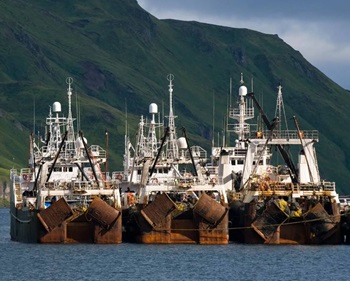 A trade association representing the Bering Sea bottom-trawl fleet filed a lawsuit this week in federal court, arguing that new halibut bycatch limits are unfair and unlawful. The North Pacific Fishery Management Council in December 2021 approved a new halibut bycatch quota system based on annual surveys of the valuable flatfish. Instead of the current fixed limits, a new abundance-based system means that when halibut stocks are low, bycatch caps could be cut by up to 35%. Based in Washington state, Groundfish Forum — representing five companies and 17 bottom-trawl vessels — sued the National Marine Fisheries Service on Tuesday in response to the new limits, which are set to go into effect Jan. 1. Attorneys argue that the trawl fleet was unfairly singled out by the new rules that could result in “drastic economic consequences.” more, >>click to read<< 08:04
A trade association representing the Bering Sea bottom-trawl fleet filed a lawsuit this week in federal court, arguing that new halibut bycatch limits are unfair and unlawful. The North Pacific Fishery Management Council in December 2021 approved a new halibut bycatch quota system based on annual surveys of the valuable flatfish. Instead of the current fixed limits, a new abundance-based system means that when halibut stocks are low, bycatch caps could be cut by up to 35%. Based in Washington state, Groundfish Forum — representing five companies and 17 bottom-trawl vessels — sued the National Marine Fisheries Service on Tuesday in response to the new limits, which are set to go into effect Jan. 1. Attorneys argue that the trawl fleet was unfairly singled out by the new rules that could result in “drastic economic consequences.” more, >>click to read<< 08:04
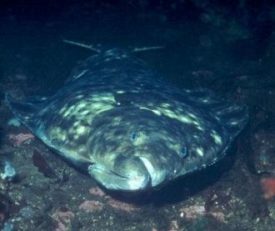
NPFMC ties limits on Bering Sea trawlers to halibut abundance
The council that manages fishing in federal waters voted to link groundfish trawl fishing in the Bering Sea and Aleutian Islands to halibut abundance today. The action caps, at least for now, a six-year debate about curbing halibut bycatch in Alaska. For many who have been following that debate, the decision comes as a surprise, since it’s expected to deal what trawlers say is a crushing blow to their fishery. >click to read< 09:10
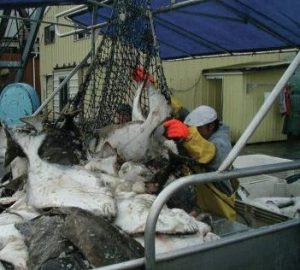
Halibut bycatch increases as council considers cod options
Data released preceding the International Pacific Halibut Commission’s upcoming interim meeting shows that almost all the regulatory areas of Alaska from Southeast to the Bering Sea — areas 2C through 4E, respectively — caught more halibut as bycatch in the 2019 season than they did in 2018, with the exception of area 4B, which covers the western Aleutian Islands. Coastwide, from California and British Columbia through the Bering Sea, bycatch increased by more than 1.5 million pounds,,, >click to read< 15:48
North Pacific Fishery Management Council gets review of Bering Sea pollock program
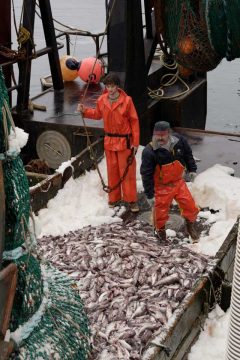 After two years of almost ceaseless contention, the North Pacific regulatory waters have cooled down for now. The Council oversees all federal fisheries between three and 200 miles off the Alaska coast. One of eight regions, the North Pacific fishery is by far the country’s most profitable, having produced two-thirds of the country’s total seafood value in 2015. Over the last two years, the council has been in battle mode over chinook salmon and halibut bycatch, and Gulf of Alaska groundfish catch shares. There have been parades of protest and industry stand-downs and rural Alaska villages emptied to give impassioned pleas alongside Seattle fishing crews and captains. At the council’s Seattle meeting Feb. 1-6, the council rested for the most part, taking scant public comment and few final actions. Rather, it focused on some of the structures behind the chaos, reviewing catch share programs and looking for areas to tune up following two years of pushing the gas. After indefinitely tabling a Gulf of Alaska catch share system four years in the works at its meeting this past December, the council reviewed the schematics behind the Bering Sea pollock fishery, Alaska’s largest fishery by volume. Read the rest of the article here 20:36
After two years of almost ceaseless contention, the North Pacific regulatory waters have cooled down for now. The Council oversees all federal fisheries between three and 200 miles off the Alaska coast. One of eight regions, the North Pacific fishery is by far the country’s most profitable, having produced two-thirds of the country’s total seafood value in 2015. Over the last two years, the council has been in battle mode over chinook salmon and halibut bycatch, and Gulf of Alaska groundfish catch shares. There have been parades of protest and industry stand-downs and rural Alaska villages emptied to give impassioned pleas alongside Seattle fishing crews and captains. At the council’s Seattle meeting Feb. 1-6, the council rested for the most part, taking scant public comment and few final actions. Rather, it focused on some of the structures behind the chaos, reviewing catch share programs and looking for areas to tune up following two years of pushing the gas. After indefinitely tabling a Gulf of Alaska catch share system four years in the works at its meeting this past December, the council reviewed the schematics behind the Bering Sea pollock fishery, Alaska’s largest fishery by volume. Read the rest of the article here 20:36
Secretary of Commerce adopts halibut bycatch cuts
 The Secretary of Commerce adopted Amendment 111 to the Magnuson-Stevens Act on Wednesday, which cuts halibut bycatch limits for groundfish trawlers. The amendment aims to reduce the bycatch in Bering Sea and Aleutian Islands groundfish fisheries. The National Oceanic and Atmospheric Administration believes the measure will reduce the overall amount of halibut bycatch in the Bering Sea and Aleutian Islands by 361 metric tons compared to 2014, or nearly 800,000 pounds, freeing up more of the lucrative fish for the directed halibut fishermen in the central Bering Sea. Read the rest here 07:38
The Secretary of Commerce adopted Amendment 111 to the Magnuson-Stevens Act on Wednesday, which cuts halibut bycatch limits for groundfish trawlers. The amendment aims to reduce the bycatch in Bering Sea and Aleutian Islands groundfish fisheries. The National Oceanic and Atmospheric Administration believes the measure will reduce the overall amount of halibut bycatch in the Bering Sea and Aleutian Islands by 361 metric tons compared to 2014, or nearly 800,000 pounds, freeing up more of the lucrative fish for the directed halibut fishermen in the central Bering Sea. Read the rest here 07:38
YEAR IN REVIEW: Federal agenda dominated by halibut bycatch concerns
Halibut  dominated the federal fisheries process in 2015, with each sector fighting over reduced allocations. Directed halibut fishermen in the North Pacific have watched their quotas drop while the trawl industry prosecuting Bering Sea groundfish has had a relatively static bycatch limit for 20 years. The North Pacific Fishery Management Council governs bycatch while the International Pacific Halibut Commission governs directed removals, and the two have not coordinated on the decline in harvestable halibut biomass. Read the article here 08:38
dominated the federal fisheries process in 2015, with each sector fighting over reduced allocations. Directed halibut fishermen in the North Pacific have watched their quotas drop while the trawl industry prosecuting Bering Sea groundfish has had a relatively static bycatch limit for 20 years. The North Pacific Fishery Management Council governs bycatch while the International Pacific Halibut Commission governs directed removals, and the two have not coordinated on the decline in harvestable halibut biomass. Read the article here 08:38
Halibut Bycatch: a Disappointing Update
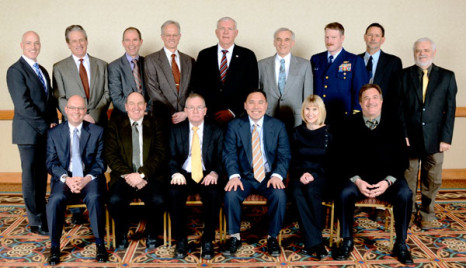 On June 9th (10th?), Alaskan halibut fishermen, who have seen their individual quotas cut by up to 70% over the last ten years gathered to watch the North Pacific Fisheries Management Council (NPFMC or North Pacific Council) vote on reduced halibut bycatch caps for trawl fleets fishing in the Bering Sea. Fact sheets from ALFA, stories from KCAW, NPFMC’s Environmental Assessment, and our previous blog post all describe the conservation fight over halibut, but here are a few crucial bullet points as a reminder: Read the rest here 12:03
On June 9th (10th?), Alaskan halibut fishermen, who have seen their individual quotas cut by up to 70% over the last ten years gathered to watch the North Pacific Fisheries Management Council (NPFMC or North Pacific Council) vote on reduced halibut bycatch caps for trawl fleets fishing in the Bering Sea. Fact sheets from ALFA, stories from KCAW, NPFMC’s Environmental Assessment, and our previous blog post all describe the conservation fight over halibut, but here are a few crucial bullet points as a reminder: Read the rest here 12:03
NPFMC must strike a better balance on halibut bycatch – Charlie Wilber
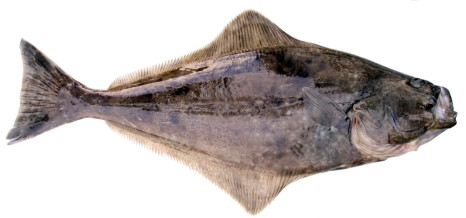 This commentary is written for all those who appreciate halibut. If you eat halibut, catch halibut, or have an interest in a healthy halibut resource you need to be aware of what happened at the North Pacific Fishery Management Council in Sitka this past week. Simply put, halibut stocks in the Bering Sea and Aleutian Islands (BSAI) area are down, and the problem is slowly affecting all of us. Read the rest here 11:07
This commentary is written for all those who appreciate halibut. If you eat halibut, catch halibut, or have an interest in a healthy halibut resource you need to be aware of what happened at the North Pacific Fishery Management Council in Sitka this past week. Simply put, halibut stocks in the Bering Sea and Aleutian Islands (BSAI) area are down, and the problem is slowly affecting all of us. Read the rest here 11:07
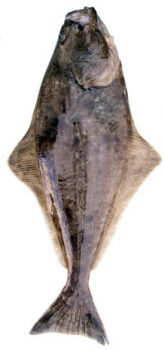
NPFMC cuts halibut bycatch limit by 25% – Nobody’s happy!
The council had a series of options for cuts of as high as 50 percent in the limit for the trawl fleet. Sam Cotten, proposed a 35 percent cut that he called “a bare minimum, maybe even a bit below.” But Cotten’s motion was amended to a 25 percent cut by Bill Tweit, a Washington council member, who called it a “strong first step” that he said would be followed by more steps to tackle the halibut bycatch. Cotten’s motion was amended to a 25 percent cut by Bill Tweit, He was interrupted by hoots of disagreement from hook-and-line fishermen who attended the meeting and had pushed for a much higher bycatch cut. Read the rest here 07:19 Bering Sea halibut bycatch cut leaves both trawlers and halibut fishermen unhappy, Read the rest here 07:26 Council cuts halibut bycatch in Bering Sea, Read the rest here 07:34
Fishermen give emotional testimony on Halibut bycatch caps at Sitka meeting, resumes at 12:00 Eastern, Listen live
 “I mean, why is their family more important than mine?” Balovich asked. “Why are their kids more important than mine? Why is their boat more important than mine? Why is their crew more important than mine?” Trawlers echoed that argument. “Why is a crew member on a directed halibut boat more important than a crew member’s livelihood on a trawl boat?” said Heather Mann, of the Midwater Trawlers Cooperative. “It’s not. It’s not more important.” Read the rest here Listen Live at adobe connect 11:47
“I mean, why is their family more important than mine?” Balovich asked. “Why are their kids more important than mine? Why is their boat more important than mine? Why is their crew more important than mine?” Trawlers echoed that argument. “Why is a crew member on a directed halibut boat more important than a crew member’s livelihood on a trawl boat?” said Heather Mann, of the Midwater Trawlers Cooperative. “It’s not. It’s not more important.” Read the rest here Listen Live at adobe connect 11:47
Halibut Dumping Stirs Fight Among Fishing Fleets In Alaska

The Rebecca Irene can’t keep that halibut: Trawlers aren’t supposed to catch it, and the law requires any halibut that are caught be thrown overboard. If the trend doesn’t change, fishermen in St. Paul face the potential of a complete shutdown. With his community’s future on the line, Swetsov choked up as he testified this week before the NPFMC, which regulates bycatch in federal waters off of Alaska. “I’m extremely angry that we’re here today,” he says. Read the rest here 11:57
Editorial: Halibut population is wobbling
 Mismanagement of bycatch — fish caught by accident while boats net other permitted species — is an offensive waste most recently highlighted by a May 30 story in the Seattle Times. The Times’ focus is on the (tinyurl.com/p9vr49l), but the issues involved are familiar to most commercial fishermen. Longstanding bycatch rules are based on distrust of fishermen and somewhat logical, but obviously counterproductive, notions about how to discourage “accidental-on-purpose” behavior. Read the rest here 19:17
Mismanagement of bycatch — fish caught by accident while boats net other permitted species — is an offensive waste most recently highlighted by a May 30 story in the Seattle Times. The Times’ focus is on the (tinyurl.com/p9vr49l), but the issues involved are familiar to most commercial fishermen. Longstanding bycatch rules are based on distrust of fishermen and somewhat logical, but obviously counterproductive, notions about how to discourage “accidental-on-purpose” behavior. Read the rest here 19:17

Dumping of halibut sparks fight among North Pacific fishing fleets
When Skipper Bill Hayes brings up his trawl net from the bottom of the Bering Sea, he often finds halibut mixed in with the yellowfin sole and other fish he pursues with a Seattle-based trawler. People often pay more than $15 a pound for halibut at the store. But federal harvest rules only allow hook-and-line fishermen — not trawlers such as the boat Hayes captains — to sell these fish. To make trawlers try to avoid halibut, they are required to dump this “bycatch” overboard. They can’t even donate the fish to a food bank. Read the rest here 08:29 Related articles, click here
OP-ED: Fears Mount over NPFMC halibut bycatch quota vote
 I have been an Alaskan since 1996. I live and work in Dutch Harbor and have built a labor and equipment company providing services to the Amendment 80 vessels. The North Pacific Management Council is meeting in June to decide whether to adjust the Amendment 80 fleet’s allowable halibut by-catch. The Council’s decision is likely to cost Alaskan jobs. We have been providing longshore services either directly or indirectly since 1998. Our company has grown from a few hard working Alaskans to a little over 120 employees. Read the rest here 18:37
I have been an Alaskan since 1996. I live and work in Dutch Harbor and have built a labor and equipment company providing services to the Amendment 80 vessels. The North Pacific Management Council is meeting in June to decide whether to adjust the Amendment 80 fleet’s allowable halibut by-catch. The Council’s decision is likely to cost Alaskan jobs. We have been providing longshore services either directly or indirectly since 1998. Our company has grown from a few hard working Alaskans to a little over 120 employees. Read the rest here 18:37
Halibut bycatch cap reduction should reflect what we know about the resource
 As a fishery scientist who has worked for more than 20 years with trawl fishermen to reduce salmon, crab and halibut bycatch, I find the recent rhetoric around proposed North Pacific Fisheries Management Council changes to the cap very frustrating. In particular, I hear media campaigns underwritten by environmental NGOs claiming, “It’s been 20 years since the halibut bycatch cap was last reduced,” implying that this has created a conservation issue. Read the rest here 14:28
As a fishery scientist who has worked for more than 20 years with trawl fishermen to reduce salmon, crab and halibut bycatch, I find the recent rhetoric around proposed North Pacific Fisheries Management Council changes to the cap very frustrating. In particular, I hear media campaigns underwritten by environmental NGOs claiming, “It’s been 20 years since the halibut bycatch cap was last reduced,” implying that this has created a conservation issue. Read the rest here 14:28
Is NOAA Stacking the NPFMC Deck? – Alaska members appeal recusals
 The North Pacific Fishery Management Council will spend the first four days of its weeklong meeting in Sitka beginning June 3 deciding on a series of deep cuts in the halibut bycatch allocation for the Bering Sea groundfish bottom-trawl fleet, but it may do so without a majority of the votes on the final decision coming from the Alaska delegation. The council, which has 11 members with six appointed from Alaska, could hold a final vote without two Alaska members, David Long and Simon Kinneen, unless the NOAA, reconsiders its decision to recommend them for recusal. Read the rest here 08:03
The North Pacific Fishery Management Council will spend the first four days of its weeklong meeting in Sitka beginning June 3 deciding on a series of deep cuts in the halibut bycatch allocation for the Bering Sea groundfish bottom-trawl fleet, but it may do so without a majority of the votes on the final decision coming from the Alaska delegation. The council, which has 11 members with six appointed from Alaska, could hold a final vote without two Alaska members, David Long and Simon Kinneen, unless the NOAA, reconsiders its decision to recommend them for recusal. Read the rest here 08:03
It’s time to reduce Bering Sea halibut bycatch
 The summer season is upon us and for many Alaskans this means fishing for one of the state’s most prized species — halibut. During the first week in June, federal fishery managers have an important opportunity to take a stand for those of us in Alaska that value and depend on the halibut resource. At their meeting in Sitka, the North Pacific Fishery Management Council will vote on measures to reduce the amount of halibut that can be wasted as bycatch in other fisheries. Read the rest here 21:23
The summer season is upon us and for many Alaskans this means fishing for one of the state’s most prized species — halibut. During the first week in June, federal fishery managers have an important opportunity to take a stand for those of us in Alaska that value and depend on the halibut resource. At their meeting in Sitka, the North Pacific Fishery Management Council will vote on measures to reduce the amount of halibut that can be wasted as bycatch in other fisheries. Read the rest here 21:23
Once again, Lu Dochtermann tells it like it is
Once again, Lu Dochtermann tells it like it is, in the decades long fight to reduce  for trawl catcher processors targeting other species for export. He calls the crying misbehaving bottom trawlers “outlaws” that they are. The NPFMC letters so far number in the 300 pages realm. Lu’s stands out because this is about disaster economics, politics, and he sees it for the ruckus that it is – and calls for PROHIBITED SPECIES CATCH cutbacks commensurate, in parity with, those the directed halibut commercial fleet has taken (over 70% drops in allowed catch of the target species itself). He’s on board his halibut boat right now in the Gulf of Alaska as he submitted his testimony with the assistance of his office. Read the rest here 22:54
for trawl catcher processors targeting other species for export. He calls the crying misbehaving bottom trawlers “outlaws” that they are. The NPFMC letters so far number in the 300 pages realm. Lu’s stands out because this is about disaster economics, politics, and he sees it for the ruckus that it is – and calls for PROHIBITED SPECIES CATCH cutbacks commensurate, in parity with, those the directed halibut commercial fleet has taken (over 70% drops in allowed catch of the target species itself). He’s on board his halibut boat right now in the Gulf of Alaska as he submitted his testimony with the assistance of his office. Read the rest here 22:54
Halibut bycatch issue: A poster child for complex fisheries policy in Alaska
 What a conundrum. How does the North Pacific Fisheries Management Council respond to the proposed 50 percent reduction of halibut bycatch in the Bering Sea/Aleutian Islands groundfish fishery requested by halibut fishermen in the region, without significantly impacting the Amendment 80, Trawl and Freezer Long Line vessels in their stead? Regardless how you look at it or what your personal involvement in any of the above fisheries is, major policy shifts in any of the multiple fisheries in the Bering Sea can absolutely impact,,, Read the rest here 12:08
What a conundrum. How does the North Pacific Fisheries Management Council respond to the proposed 50 percent reduction of halibut bycatch in the Bering Sea/Aleutian Islands groundfish fishery requested by halibut fishermen in the region, without significantly impacting the Amendment 80, Trawl and Freezer Long Line vessels in their stead? Regardless how you look at it or what your personal involvement in any of the above fisheries is, major policy shifts in any of the multiple fisheries in the Bering Sea can absolutely impact,,, Read the rest here 12:08
Movement grows in Alaska against halibut bycatch
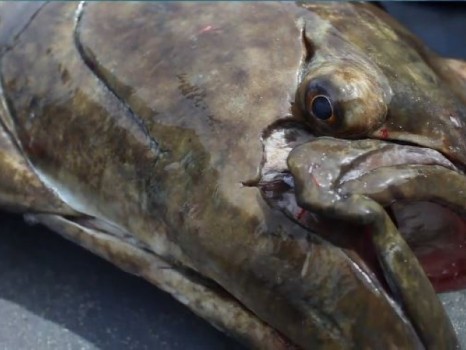 Across the state, letters and resolutions supporting the reduction of halibut bycatch caps in the Bering Sea/Aleutian Islands (BSAI) fisheries are surfacing — calling attention to a widespread and diverse movement for change. As directed halibut fisheries in the Bering Sea have reached crisis-level lows, bycatch limits on that same species remains at its decades-long level of 7.3 million pounds. Despite some voluntary bycatch reductions by the fleet, BSAI fisheries killed and discarded seven times more halibut (animals, not pounds) in 2014 than the directed fishery landed in that same region. Read the rest here 19:32
Across the state, letters and resolutions supporting the reduction of halibut bycatch caps in the Bering Sea/Aleutian Islands (BSAI) fisheries are surfacing — calling attention to a widespread and diverse movement for change. As directed halibut fisheries in the Bering Sea have reached crisis-level lows, bycatch limits on that same species remains at its decades-long level of 7.3 million pounds. Despite some voluntary bycatch reductions by the fleet, BSAI fisheries killed and discarded seven times more halibut (animals, not pounds) in 2014 than the directed fishery landed in that same region. Read the rest here 19:32
Alaskan Coastal legislators support halibut bycatch cuts
 The Alaska legislature’s coastal representatives sent a letter to the North Pacific Fishery Management Council expressing support for 50 percent halibut bycatch cap reductions for the groundfish fleet in the Bering Sea and Aleutian Islands. “Over the past decade,” the legislators wrote, “more than 62 million pounds of halibut has been caught, killed, and discarded as bycatch in the Bering Sea/Aleutian Islands. During the same period, landings of halibut as the target species have declined from an already alarmingly small 52 percent,,, Read the rest here 11:27
The Alaska legislature’s coastal representatives sent a letter to the North Pacific Fishery Management Council expressing support for 50 percent halibut bycatch cap reductions for the groundfish fleet in the Bering Sea and Aleutian Islands. “Over the past decade,” the legislators wrote, “more than 62 million pounds of halibut has been caught, killed, and discarded as bycatch in the Bering Sea/Aleutian Islands. During the same period, landings of halibut as the target species have declined from an already alarmingly small 52 percent,,, Read the rest here 11:27
Alaska groundfish sector gears up for access to resource battle with halibut
Letters in protest of potentially drastic halibut bycatch reductions for Bering Sea and Aleutian Islands (BSAI) as groundfish fleets are flowing to fisheries regulators as companies prepare to battle with the halibut sector for access to resource at the North Pacific Fishery Management Council (NPFMC) meeting in June. The battle will not be easy. They’re going up against an ailing 4CDE area , which has seen its quota cut by roughly 58% since 2011 as groundfish bycatch has increased to become the majority of the catch in that region. Read the rest here 17:35
Halibut bycatch tough to manage
 A lot has changed in Alaska since commercial vessels began fishing for halibut off the coastline in 1888, but in almost 130 years, halibut has remained a staple of the state’s fishing economy and culture. Along with salmon and crab, no species of fish captures the Alaskan imagination and fills Alaskan pocketbooks more than halibut. So it comes as little surprise that the Bering Sea fishery’s estimated 4.5 million pounds of halibut bycatch in 2014 has lot of people concerned. Read the rest here 18:18
A lot has changed in Alaska since commercial vessels began fishing for halibut off the coastline in 1888, but in almost 130 years, halibut has remained a staple of the state’s fishing economy and culture. Along with salmon and crab, no species of fish captures the Alaskan imagination and fills Alaskan pocketbooks more than halibut. So it comes as little surprise that the Bering Sea fishery’s estimated 4.5 million pounds of halibut bycatch in 2014 has lot of people concerned. Read the rest here 18:18
NPFMC to review 50 percent cut on halibut bycatch
 Halibut harvests have been on the decline in the Bering Sea for several years. But the amount that trawlers and catcher-processors are allowed to take incidentally has stayed the same. Now, fishery regulators have agreed to consider stiffer limits on halibut bycatch. Read the rest here 16:08
Halibut harvests have been on the decline in the Bering Sea for several years. But the amount that trawlers and catcher-processors are allowed to take incidentally has stayed the same. Now, fishery regulators have agreed to consider stiffer limits on halibut bycatch. Read the rest here 16:08
Alaska needs a major halibut bycatch reduction, by David Bayes
I’ve watched as longline and charter halibut allocations have declined steadily, and have long awaited the day when regulators would hold trawlers accountable for their waste.  Though the halibut stocks in the Bering Sea may seem unimportant to Anchorage and the Peninsula, the Northeastern migration of growing halibut means problems that begin in the Bering Sea will soon enough carry through to our area. Though the Bering Sea is a remote region, what precedent does Alaska set by allowing this blatant abuse of one of our most valuable and symbolic resources? Read the rest here 11:11
Though the halibut stocks in the Bering Sea may seem unimportant to Anchorage and the Peninsula, the Northeastern migration of growing halibut means problems that begin in the Bering Sea will soon enough carry through to our area. Though the Bering Sea is a remote region, what precedent does Alaska set by allowing this blatant abuse of one of our most valuable and symbolic resources? Read the rest here 11:11
OPINION: Halibut waste in the Bering Sea is deplorable – By Pete Wedin
 The Bering Sea directed halibut fishery is in a state of crisis. For the 2015 season, IPHC proposes reduction of the catch limits in Area 4CDE by a whopping 71 percent. How many of us could weather such a cut?In the mean time, trawl bycatch caps in the Bering Sea remain unchanged, and millions of pounds larger than the directed fishery quota. The truly sad thing about all of this is that more than 65 percent of the halibut bycatch in the Bering Sea is caused by trawlers targeting two species: yellowfin sole and rock sole. Read the rest here 09:18
The Bering Sea directed halibut fishery is in a state of crisis. For the 2015 season, IPHC proposes reduction of the catch limits in Area 4CDE by a whopping 71 percent. How many of us could weather such a cut?In the mean time, trawl bycatch caps in the Bering Sea remain unchanged, and millions of pounds larger than the directed fishery quota. The truly sad thing about all of this is that more than 65 percent of the halibut bycatch in the Bering Sea is caused by trawlers targeting two species: yellowfin sole and rock sole. Read the rest here 09:18
NPFMC talks crab, halibut bycatch
 SEATTLE — The North Pacific Fishery Management Council spent much of the day talking about Bering Sea bycatch, and agreed to move forward on one related discussion paper…The council also heard extensive public testimony on halibut bycatch in that same region this afternoon. Action is expected on that issue Saturday morning, with the advisory panel recommending another draft of the halibut bycatch discussion paper. Read more from Molly Dischner @alaskajournal.com The meeting will be broadcast LIVE at npfmc.webex.com. 08:16
SEATTLE — The North Pacific Fishery Management Council spent much of the day talking about Bering Sea bycatch, and agreed to move forward on one related discussion paper…The council also heard extensive public testimony on halibut bycatch in that same region this afternoon. Action is expected on that issue Saturday morning, with the advisory panel recommending another draft of the halibut bycatch discussion paper. Read more from Molly Dischner @alaskajournal.com The meeting will be broadcast LIVE at npfmc.webex.com. 08:16
Halibut bycatch delivered to Kotzebue food bank – Feed the People!
The halibut is the bycatch from trawlers that is delivered to Kodiak. The delivery was arranged by Bainbridge Island Wash.-based Sea Share, an organization that redirects fish once thrown overboard to food banks.  said the group has donated more than 180 million seafood meals throughout the United States. continued@newsminer
said the group has donated more than 180 million seafood meals throughout the United States. continued@newsminer






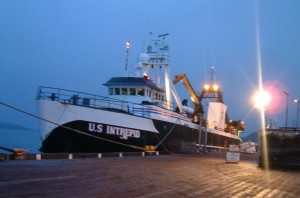




























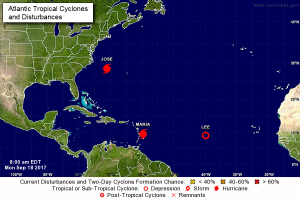
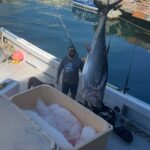


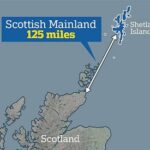
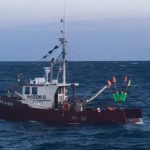

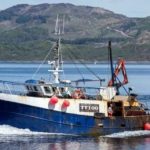
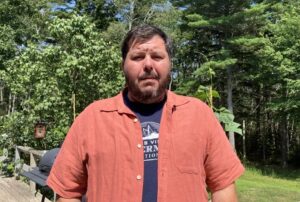
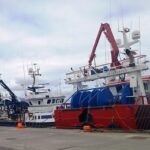

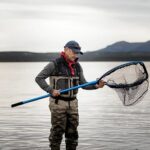



Had it with high halibut bycatch? Tell the NPFMC by May 26
Share this post